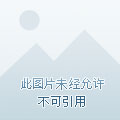CCTV news: After the Shenzhou 13 crew astronauts Zhai Zhigang, Wang Yaping, and Ye Guangfu completed the "Tiangong Classroom" lecture for the first time on the China Space Station on December 9 last year, after more than 3 months, the second lesson of the "Tiangong Classroom" was held again on the afternoon of March 23. What did the three astronauts say in the Tiangong classroom on the 23rd and what experiments were demonstrated?

In the about 45 minutes of lectures, the astronauts vividly demonstrated the space "ice and snow" experiment, the liquid bridge demonstration experiment, the water and oil separation experiment, and the space parabolic experiment in the microgravity environment, explained the scientific principles behind the experimental phenomena in a simple and simple way, and showed some space science facilities and introduced the work and life on the space station.
This is a space "ice and snow" experiment that demonstrates the crystallization of saturated liquids in weightlessness to students.
Astronaut Wang Yaping: The next step is to witness the miracle. see! The liquid ball crystallizes quickly, is it very similar to a hockey ball?
Liquid bridge demonstration experiment to demonstrate the surface tension of water in weightless environment to students.
Astronaut Wang Yaping: Students, under the action of surface tension, water connects two plastic plates, is it not like a bridge?
During the lecture, the astronauts interacted with the teachers and students of the ground classroom through video calls.
Space tie-dye: a wonderful blend of traditional culture and modern technology
During the orbit, the astronauts also brought the traditional and unique chinese folk handicraft - tie-dye to the space station.
Astronaut Wang Yaping: Hello students, I am Space Teacher Wang Yaping. Today, I would like to show you another interesting phenomenon, which is also related to an intangible cultural heritage of our country.
Space teacher Wang Yaping first showed the obvious difference between space twist towels and the ground, the magical phenomenon of water attached to the hand under microgravity, and explained the capillary adsorption, paving the way for the introduction of tie-dye techniques. The next expected tie-dye demonstration began. Wang Yaping first used tools such as yarn, thread, and rope to tie, sew, tie, embellish, clip and other operations on the fabric, so that the knotted part remained in the original color.
Astronaut Wang Yaping: The method of bundling directly affects the pattern of the final work, which is a key step, oh, different lashing methods can produce different tie-dye patterns, and guess what kind of pattern I will tie out in a moment?
After that, the fabric is dyed with dyes such as plate blue roots.
Astronaut Wang Yaping: This is the dye powder that needs to be used for tie-dyeing, and after mixing it with water, it is the dye we want to use.
After the dyeing is completed, the binding part is disassembled, and the tie-dye work is formed in a light and natural, layered tie-dye work.
Space tie-dye allowed the students to feast their eyes and at the same time better understand the traditional culture of the motherland, and witnessed the wonderful integration of thousands of years of traditional culture and modern science and technology.
Astronaut Wang Yaping: Students, the blue and white tie-dye works are completed, is it very beautiful? This is my tie-dye work, and students can try different ways of tying to make your own tie-dye work that is unique to you.
Source: CCTV